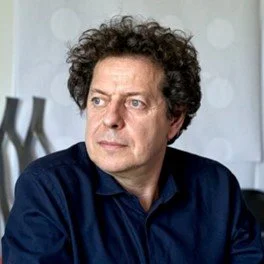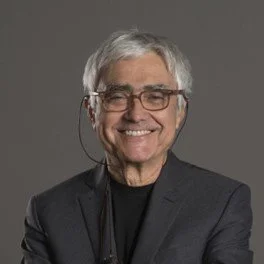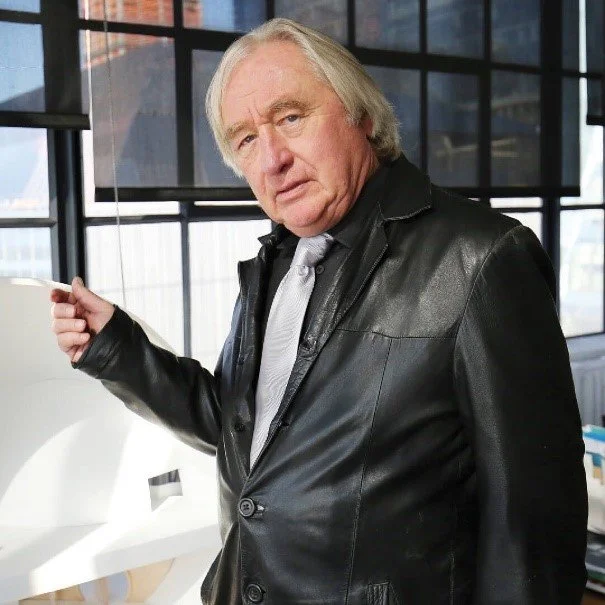Question of the Month 1
Our principal, Salo Levinas, recently partnered with LA.IDEA|DC on an interview series in which Salo posed a question each month to three prominent architects. This is the first of those questions and the responses from Juan Herreros, Rafael Viñoly, and Steven Holl.
Question of the month:
The ways in which we think about community — and the need for community — have been transformed by developments in technology, climate change, and the pandemic. What is the potential for design to effect positive change in these areas of human life? What role can the architect play as an agent to conceive and promote solutions to these new cultural challenges?
Juan Herreros, PhD
Founder of Estudio Herreros,
Chair Professor of Architectural Design at Madrid School of Architecture and Full Professor at the GSAPP of Columbia University in New York
The concept of community has always been tied to the desire to live together. In the design and construction of the city, architecture and urbanism shouldn’t be approached building by building but rather through a holistic thought that includes all equations - cultural, social, political, environmental - and brings together all disciplines and related social groups that shape the urban conglomerate.
Rafael Viñoly
Founder of Rafael Viñoly Architects
Recent developments in technology, mounting evidence of the risks we face from the effects of climate change, and the economic and physical consequences of the pandemic, reaffirm the importance of maintaining our focus on the collective as a critical dimension, precisely because these phenomena impact us as individuals.
There is no way to hide from them. Community is the expression of our collective being, and it manifests itself primarily in real time and real space. No simulacra can replace that experience.
Therefore, designing for the community should be an act that anticipates, it should prefigure a condition that doesn’t yet exist, but that we can predict. The result can be corrective, but fundamentally should express a vision of the future.
There is no more room for nostalgia. We face an unprecedented acceleration of change that challenges our idea of how to live our lives. Adaptation occurs now not over millennia, centuries, or decades, but almost seasonally. To handle that speed of change we need technology.
Denying this is to miss the point. Instead, what we should make every effort to deny is the concentration of technological power that makes us, collectively, the object of design rather than the source of it. These are fraught times but also promising times if we keep striving for equity, creativity, and imagination.
Steven Holl
Founder of Steven Holl Architects
A RESET: summarized in 10 points:
Global shift to renewable energy: elimination of fossil fuels; transformation of transportation industry.
Shift the food chain: localize food production; farm-to-table replace flown-in, shipped-in, trucked-in foods (shipping jobs transformed to local growth jobs); waste treatment.
Reduction of global flying: eliminate non-essential redundant flying.
Tourism reduction: in overrun tourist destinations—Hawaiian islands, Venice, and many others—80 percent of locals want tourism reduced as it is destructive and disrespectful.
Shift workplace to home office and live/work: supported by the digital revolution; replace the need for new office towers; re-work existing office buildings to residential hybrid buildings; eliminate commuting.
Urban rezoning for hybrid live/work future: require more public greenspace, ecological balance and biodiversity in urban designs.
Design new architecture for walkable communities: re-work abandoned shopping malls and parking lots into greenspaces; new future towns with living, working, recreational, and cultural programs, all with net-zero energy designs.
Nature awareness and action via science and collaboration: pandemic urban exodus caused millions of people to become more aware of nature; launch new actions for protection of natural landscapes and ecosystems in balance with new architectures.
Transformation of consciousness propelled by arts and culture: future poetry, painting, sculpture, music, and architecture created in a spirit of new balance, full of hope and future potential.
Revolution in bio-science: new health futures opened by CRISPR and other recent discoveries, like the discovery of one trillion galaxies in the universe, open us to unknown potential.



